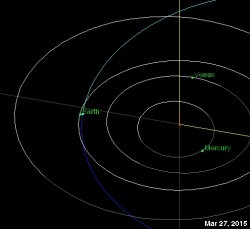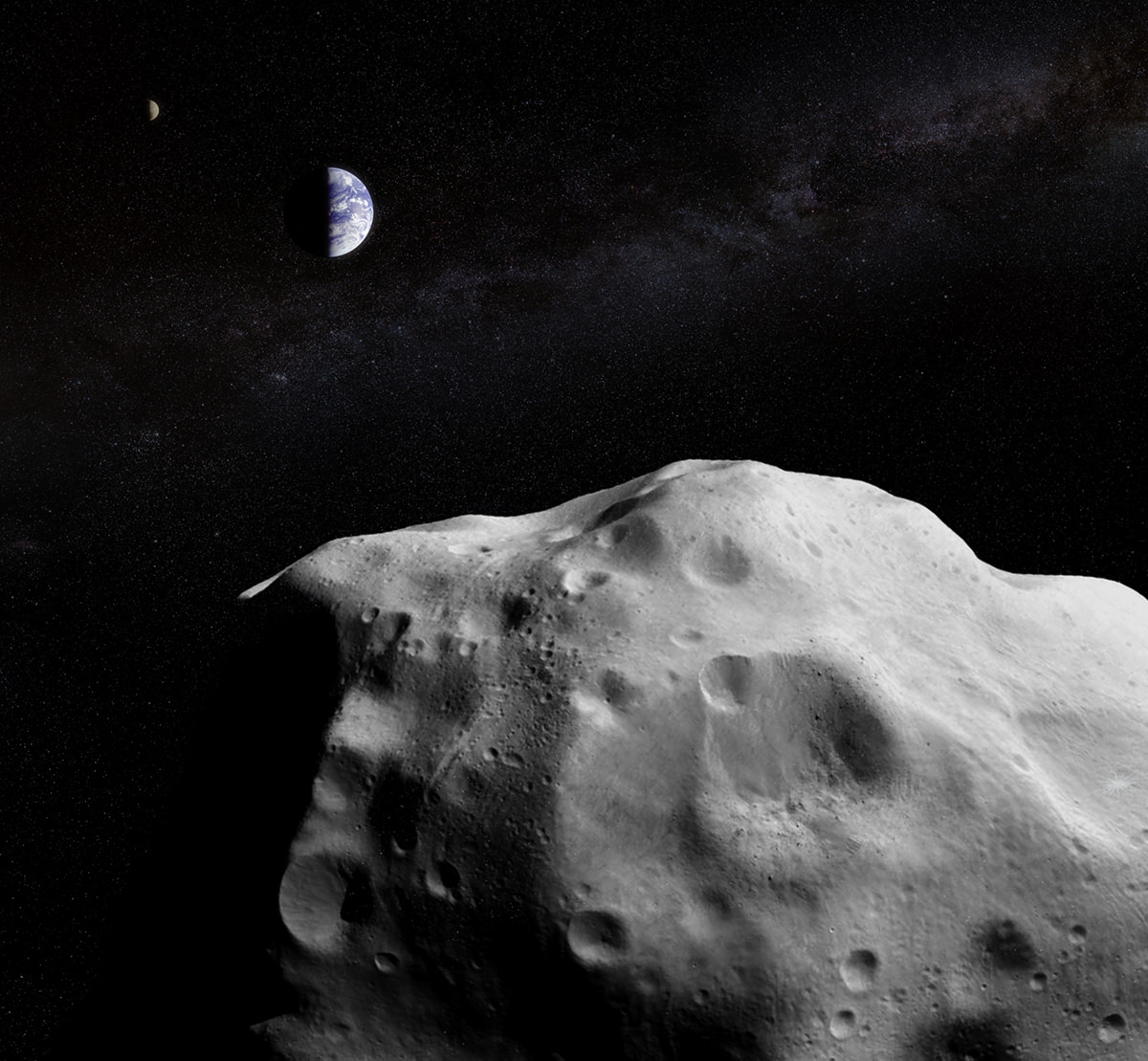There are ways to report on occasional close approaches by near-Earth objects (NEOs) that convey the respectful awareness of their presences and the fact that our planet shares its neighborhood with many other objects, large and small… and that sometimes their paths around the Sun bring them unnervingly close to our own.
Then there’s just straight-up over-sensationalism intended to drum up page views by scaring the heck out of people, regardless of facts.
Apparently this is what’s happened regarding the upcoming close approach by NEO 2014 YB35. An asteroid of considerable (but definitely not unprecedented) size – estimated 440-990 meters in diameter, or around a third of a mile across – YB35 will pass by Earth on Friday, March 27, coming as close as 11.7 times the distance between Earth and the Moon at 06:20 UTC.
11.7 lunar distances. That’s 4.5 million kilometers, or almost 2.8 million miles. Cosmically close, sure, but far from “skimming”…and certainly with no danger of an impact or any of the nasty effects that would be a result thereof. None. Zero. Zilch. NASA isn’t concerned, and you shouldn’t be either.
I typically wouldn’t even bother writing up something like this, except that I have been seeing posts shared among acquaintances on Facebook and Twitter that refer to sensationalist articles portraying the event as a frightening near-miss by an apocalyptic object. I won’t link to those articles here but in short they focus heavily on the destructive nature of an object the size of YB35 were it to hit Earth and how it would wipe out “all species” of life on our planet wholesale, and how YB35 is “on course” with Earth’s orbit.
The problem I have is that these statements, although technically not false in themselves, are not being used to demonstrate the potential danger of large-scale cosmic impact events but rather to frighten and alarm people about this particular pass. Which is not any way to responsibly inform the public about impacts, asteroids, and what we can or should be doing to mitigate these dangers.

First observed through the Catalina Sky Survey in Dec. 2014, YB35 is a good-sized asteroid. It will come relatively close to Earth on Friday but more than plenty far enough away to not pose any danger or have any physical effects on Earth in any way (similar to the close pass of the smaller asteroid 2014 UR116 in December.) YB35 will actually make slightly closer passes in March 2033 and in 2128, but still at similar distances.
YB35 is, for all intents and purposes, one of the many potentially-hazardous* asteroids that won’t hit us, and NASA is well aware of nearly all of the NEOs in its size range thanks in no small part to space observatories like NEOWISE and various ground-based survey projects around the world. They will observe this event for the increased information on YB35 that can be gathered, but they are not “on alert” and the astronomers certainly aren’t “terrified.”
Should we take this as a reminder that large asteroids are out there and we should be as diligent as we can about identifying them? Yes, certainly. Should we support missions that would help spot and track near-Earth objects as well as those that would provide a way to potentially deflect any large incoming ones? Of course. Should we drop to our knees and cry “why?!” or sleep in our backyard bunkers tonight surrounded by bottled water and cans of beans? Not at all.
So don’t believe the hype, don’t go max out your credit cards, and please don’t sleep in your bunker. Pass it on.
Want to learn more about NEOs and close approaches? Visit JPL’s Near-Earth Object Program page here. Also, watch a fascinating animation showing the discovery rate of asteroids in the Solar System from 1980-2011 by Scott Manley below.
*Note: Potentially-hazardous asteroids (PHAs) are those larger than 150m whose orbits could cross Earth’s in the future, not necessarily that they will or that Earth will be sharing the same place when and if they do.


I’ve seen Scott Manley’s vid with him commenting on the observations made and found it well worth it. Although, this one has artistic value for sure.
For the one with comments Scott Manley himself:
Coloutere, take it somewhere else!
This is not the place to go phishing for suckers!
Just seeing your entry here makes me shudder with the thought of more Trojans in my computer.